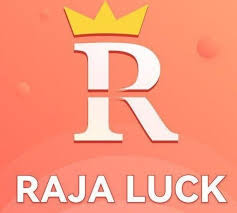Tea Break Time in Test Cricket Explained: Timing, Significance & Traditions
Test cricket is often called the purest form of the game. It’s a battle of skill, patience, and endurance spread over five days. Among its many unique traditions, tea break time in Test cricket stands out.
But why does a sport need a tea break? How long is it? And what happens during this break? Let’s break it all down.
What Is Tea Break Time in Test Cricket?
Tea break time in Test cricket is a scheduled interval that happens during the second session of a day’s play. It gives players a short break to rest, refresh, and plan for the final session.
Unlike shorter formats like ODIs and T20s, Test matches last up to five days. That’s why breaks like lunch and tea are essential to keep players physically and mentally sharp.
Tea Break Time in Test Cricket: Timing & Duration
When Does the Tea Break Happen?
The tea break occurs after the second session of play, following the lunch break and before the final session.
Here’s how the general schedule works:
- First Session: Starts in the morning and ends with the lunch break.
- Second Session: Begins after lunch and continues until tea break.
- Final Session: Resumes after tea and runs until the end of the day’s play.
How Long Is Tea Break Time in Test Cricket?
The tea break lasts 20 minutes. During this time, players head back to the dressing room or designated areas to hydrate, eat light snacks, and strategize for the remainder of the session.
What Happens If Play Is Delayed?
Sometimes, due to rain or other interruptions, the tea break schedule might change:
- If play is delayed before tea, the break may be adjusted or rescheduled.
- If tea coincides with a wicket falling, the break still happens as scheduled.
Why Is There a Tea Break in Test Cricket?
Tea breaks have been a part of Test cricket since the early days. The tradition started in England, where cricket matches often featured a break for tea—a common afternoon practice in British culture.
While other cricketing nations have adopted the break, the purpose remains the same:
- Rest & Recovery: Players need a break to recharge after a long session.
- Tactical Planning: Teams use this time to discuss strategies for the final session.
- Umpires’ Break: Match officials also use the tea interval to refresh and review any concerns.
Though cricket has evolved, the tea break in Test matches has remained a key part of the game.
Does Tea Break Time Impact the Game?
Absolutely! The tea break is more than just a pause—it can change the momentum of a match.
1. Strategy Reset
Bowlers and fielders analyze the pitch conditions, while batters plan their approach for the final session. A well-utilized tea break can turn the game in a team’s favor.
2. Momentum Shift
If a team loses a key wicket just before tea, it gives the opposition a psychological edge. Similarly, a batter reaching a milestone (like a century) before the break can come back stronger.
3. Weather & Pitch Conditions
As the day progresses, pitch conditions often change. Teams use the tea break to reassess the situation and adjust their tactics accordingly.
Tea Break Traditions: What Do Players Eat & Drink?
Tea breaks are different across cricketing nations, but here’s what you’ll typically find:
Common Tea Break Snacks:
- England & Australia: Sandwiches, biscuits, tea, and coffee.
- India & Pakistan: Light Indian snacks, fruits, energy drinks.
- South Africa & New Zealand: Protein-rich snacks like chicken sandwiches and nuts.
While tea is the traditional drink, players also have sports drinks, juices, and water to stay hydrated.
Fun Facts About Tea Break Time in Test Cricket
- The fastest tea break century was scored by Brendon McCullum (54 balls) in his farewell Test match for New Zealand.
- England’s cricket culture strongly influenced the tradition of tea breaks in Test cricket.
- Umpires have the final say in declaring or shortening the tea break due to weather conditions.
- Some players prefer to stay on the field and keep practicing during tea intervals.
How Tea Breaks Have Changed Over Time
The tea break in Test cricket has evolved, but its core purpose remains. In the early days, the break was more about tradition than necessity. Today, with fitness and sports science playing a major role, players focus more on hydration and nutrition during this interval.
With modern scheduling, day-night Test matches have introduced new dynamics. Instead of tea, these matches have a “dinner break” to fit the adjusted playtimes.
FAQs About Tea Break Time in Test Cricket
1. Why is tea break important in Test cricket?
Tea breaks give players time to rest, rehydrate, and strategize before the final session, making them crucial for performance.
2. How long is the tea break in Test cricket?
It lasts 20 minutes and occurs between the second and third session of play.
3. What do players do during tea break?
They refresh, eat light snacks, drink fluids, and discuss strategies with coaches and teammates.
4. Can the tea break be skipped or shortened?
In rare cases, if rain or bad light delays play significantly, the umpires may adjust the tea break schedule.
5. What is served during tea breaks?
It varies by country, but typical options include tea, coffee, energy drinks, sandwiches, fruits, and protein-rich snacks.
6. Do all cricket formats have a tea break?
No, only Test matches have tea breaks. Limited-overs formats like ODIs and T20s have shorter drinks breaks instead.
7. What happens if a wicket falls just before tea?
The break happens as scheduled, and the new batter resumes after tea.
8. Why is it called a “tea break” and not just a break?
The term comes from England’s cricketing tradition, where tea was commonly served during afternoon breaks in matches.
Final Thoughts
The tea break in Test cricket is more than just a tradition—it’s a key moment that impacts the game. Whether it’s helping players reset, shifting momentum, or just offering a nostalgic connection to the sport’s roots, the tea break remains a beloved part of Test matches.
Next time you watch a Test match, pay attention to what happens before and after the tea break—you might notice how it changes the game!













Post Comment